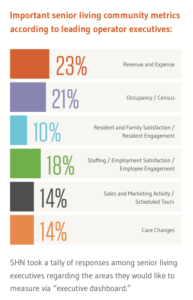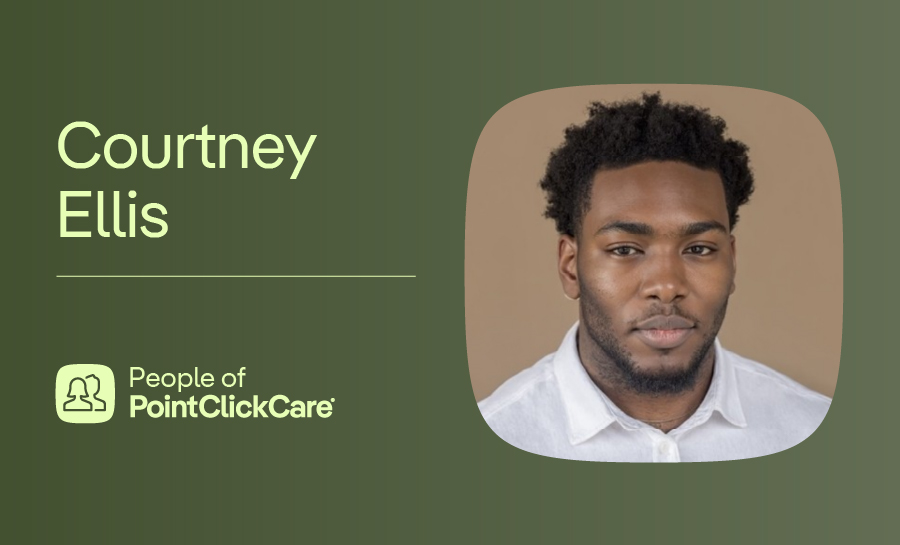We spoke with leaders in the industry to learn about their biggest challenges, and how they’ve overcome them. The biggest hurdle for CEOs has been the need for more meaningful data that can be used to drive better decision-making across their business. But exactly what metrics have CEOs identified as the most important?

We surveyed leading operator executives to determine their three most-important metrics:
1. Revenue and Expenses
2. Occupancy or Census
3. Staffing, Employment Satisfaction, and Employee Engagement
1. Revenue and Expenses
In our survey, 23% of executives indicated revenue and expense metrics as a top priority. This key operational metric helps determine if additional revenue generation tactics (such as ancillary services) are needed, or if your community is receiving payments in a timely manner. Examining your revenue and expense metrics can also help identify any overspend on staffing. If you’re spending a lot on overtime, you may want to consider hiring an additional staff member or making a change to the staff schedule.
2. Occupancy or Census
When it comes to tracking community performance, occupancy is the top-cited metric. Keeping a close eye on this is essential to maintaining profitability. The ability to identify a decline in occupancy as soon as possible allows for the early deployment of tactics to attract new residents. Maintaining a record of why residents move out of the community can also provide valuable and actionable insights. If you identify that several residents are leaving to seek additional cardiovascular treatment, you may want to consider developing a cardio-specific program to keep those residents healthier — and in your community.
3. Staffing
It’s no secret that there’s a concern around staffing in senior care, driving many executives to focus on attracting and retaining qualified employees. To do this, they need a good culture — and a good strategy to support it. How are they creating their strategies to increase staff engagement and experience? By conducting regular surveys to measure and track staff satisfaction, and monitoring turnover rates. Ensuring that staffing levels are determined by the needs of the community, as overwork or underwork can cause dissatisfaction among employees.
The only way to see all this information in one place is to have a centralized platform, such as an electronic health record (EHR) platform. The metrics you gather tell a story about your community and its ability to deliver positive results for residents and staff. And if you have a great story, your community will thrive.







